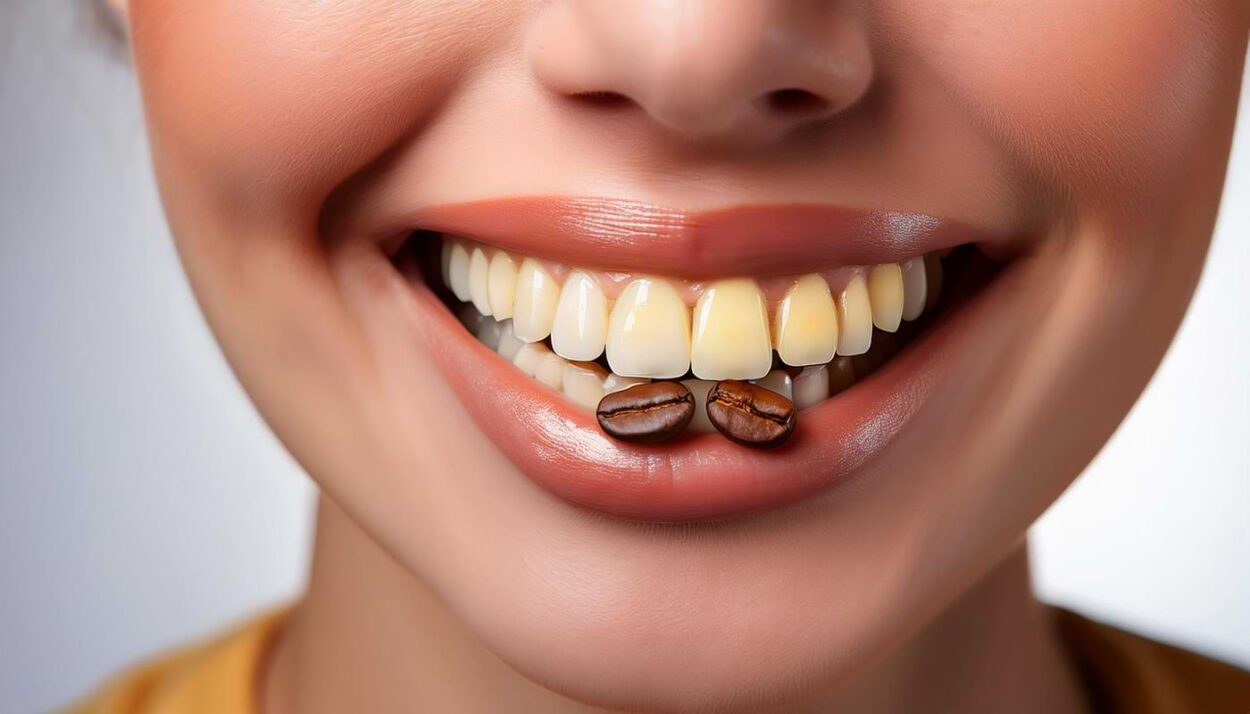Coffee and tea are essential beverages in our daily lives. However, frequent consumption of these beverages can cause teeth to discolor over time. This can be aesthetically unsettling, and it's not just limited to appearance; it's also directly related to oral care habits. So, how do coffee and tea affect tooth color, what causes this staining, and what can be done to preserve it?
How Do Coffee and Tea Ingredients Change Teeth Color?
Coffee and tea contain natural compounds called tannins. Tannins can adhere to tooth enamel and cause surface discoloration over time. Frequent consumption of hot beverages, in particular, increases the permeability of tooth enamel, allowing stains to set in more easily.
Coffee, because of the dark pigments it contains brownish spots, tea is yellow-toned colorations These stains usually start superficially, but can become more permanent over time if regular dental care is not provided.
Additionally, the acidic nature of beverages slightly erodes the surface of tooth enamel, making it easier for pigments to adhere. Coffee, in particular, is a prominent factor influencing tooth discoloration due to its acidic pH. Therefore, it's important to maintain oral hygiene after consuming coffee or tea.
Tüketim Alışkanlıkları ve Diş Lekelenmesi Arasındaki İlişki
The color change caused by coffee and tea consumption on teeth depends not only on the content, consumption frequency and habits Drinking more than a few cups of coffee or tea during the day can cause a significant discoloration on your teeth over time.
- Frequent consumption of hot drinks, accelerates staining by softening the enamel surface.
- Even if it is drunk without sugarPigments found in tea and coffee can adhere to the tooth surface.
- Smoking When consumed with, the color change becomes even more noticeable.
- Inadequate dental hygiene In this case, these pigments can combine with the plaque layer and turn into permanent stains.
Therefore, reducing coffee and tea consumption or making some habit changes (e.g., using a straw or rinsing your mouth with water after drinking) can help preserve tooth color. Regular dental checkups also help remove superficial stains early.
Precautions That Can Be Taken to Protect Tooth Color
For most people, completely giving up coffee and tea isn't possible. However, it's possible to maintain tooth color with good habits. The following suggestions may be effective:
- Take care of oral hygiene: Brushing and flossing at least twice a day will prevent stains from becoming permanent.
- Get professional cleanings recommended by your dentist: Regular cleaning in a clinical environment removes superficial stains.
- Use whitening toothpastes: These products may reduce the adhesion of pigments to the enamel surface.
- Make it a habit to drink water after consuming coffee and tea: This simple step shortens the time the pigments remain in the mouth.
- Avoid extremely hot or very cold drinks: Temperature differences can affect the enamel structure and pave the way for discoloration.
It is possible to preserve tooth color with regular oral care, professional checkups and conscious consumption habits.
Coffee and tea, while enjoyable beverages, can also have an impact on dental aesthetics. The tannins and pigments they contain can cause discoloration on the tooth surface over time. However, this can largely be prevented with proper care and regular dental checkups.
Maintaining dental health is important not only for an aesthetically pleasing smile but also for maintaining overall oral health. Balancing coffee and tea consumption, followed by simple hygiene habits, will help maintain the natural whiteness of your teeth in the long run.
This text is intended to provide general information. The appropriate treatment method for each patient may vary, and therefore, a dentist who is an expert in the field should be consulted. Before making any decision regarding dental health, it is of great importance that you have a detailed examination and consultation with your physician. These articles are for informational purposes only and are not intended to replace professional medical advice.



 by
by